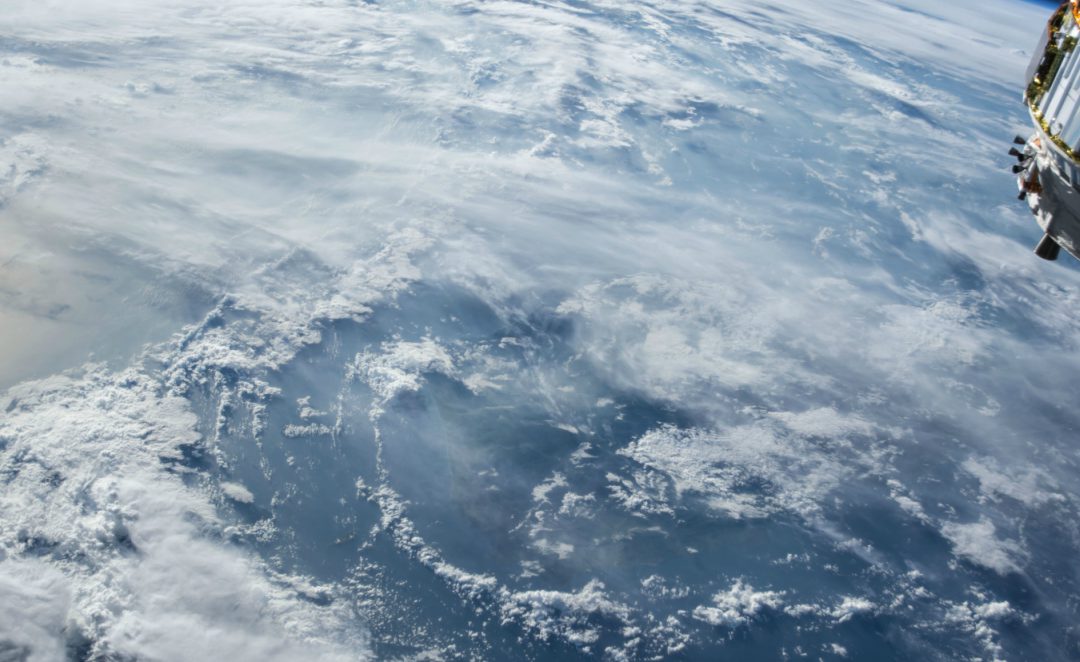From time to time, it is good to look around and see what has been changing on our lovely blue and white planet—our earthly home. As many of us know, there are a lot of prophecies and predictions about planet changes, and they are not just from psychics. Seismologists are the biggest predictors of physical change. Our Earth is not stagnant but is moving all the time and is inside a solar system, galaxy, and universe that is very active. Let’s take a look at some of the recent changes and the prophecies associated with these changes.
Mt. Vesuvius Volcano
Our organization has had several inquiries lately due to the wildfires in southern Italy that appear to show Mt. Vesuvius ablaze. Many have heard of Cayce’s prophecy that says that “greater activity” in Mount Vesuvius is a foretelling of a coming major earthquake in the western U.S. Well, there is activity in Campi Flegrei, the super-volcano next to Mt. Vesuvius, and certainly these wildfires are of concern for those who live in the affected area, but there is NO real indications that Vesuvius itself is becoming active again.
I have watched various sources for the latest news related to activity in the Vesuvius area and found this update:
The following is from National Geographic (Dec. 22, 2016): “A long-quiet yet huge super-volcano that lies under 500,000 people in Italy may be waking up and approaching a ‘critical state,’ scientists reported this week in the journal Nature Communications.
Another report: “Based on physical measurements and computer modeling: ‘We propose that magma could be approaching the CDP [critical degassing pressure] at Campi Flegrei, a volcano in the metropolitan area of Naples, one of the most densely inhabited areas in the world, and where accelerating deformation and heating are currently being observed,’ wrote the scientists—who are led by Giovanni Chiodini of the Italian National Institute of Geophysics in Rome.”
Like other super-volcanoes – such as the one responsible for the geothermal features in Yellowstone National Park – it is not a single volcanic cone. Rather, it’s a large complex, much of it underground causing geysers and vents to release hot gas.
Is Zealandia Lemuria?
Researchers have discovered that New Zealand is not an island but a continent. They are calling the continent Zealandia, comprising roughly 3 million square miles with 94% underwater.
Edgar Cayce described two ancient continents, Lemuria and Atlantis. Lemuria was in the Pacific Ocean, and we many assume that many of the ocean’s islands are the mountaintops of Lemuria. This new discovery may indicate that Zealandia might have been a major region of ancient Lemuria. Curiously, Edgar Cayce gave a reading about this very area of the world in relation to earth changes during our time:
Q: How soon will the changes in the earth’s activity begin to be apparent?
A: When there is the first breaking up of some conditions in the South Sea – that’s South Pacific, to be sure – and those as apparent in the sinking or rising of that that’s almost opposite same, or in the Mediterranean and the Aetna [Etna] area, then we may know it has begun.
— Edgar Cayce reading 311-8
The area in the South Pacific that Cayce says is “almost opposite” the Mediterranean and Etna area can be seen in the illustration above. About two-thirds of all worldwide deep quakes are located in this area because it is where the Indo-Australian plate rides over the “subducting” Pacific plate at the Tonga Trench. Cayce appears to be saying that there will first be “breaking up” in the South Pacific followed by some land sinking and some rising in and around Etna and the Mediterranean Sea. This area of the Mediterranean is under great pressure from 4 tectonic plates: (1) Eurasian, (2) Adria microplate, (3) Anatolia, and (4) African. The plate edges run up along the eastern shore of the Adriatic Sea crossing Serbia, Croatia, Slovenia around the Italian Alps, and down the east coast of Italy into the Mediterranean, crossing Sicily into North Africa. The year 2016 was a record-breaking year for earthquakes in New Zealand with a total of 32,828, two of which topped 7.5 magnitude, causing 80,000 mudslides, two tsunamis, and one volcanic eruption. That’s a lot of activity.
According to the theory of continental drift and tectonic plates, the world was originally a single continent. That continent, called Pangea, eventually separated and drifted apart, forming into the seven major plates that we have today: African, North American, South American, Eurasian, Australian, Antarctic, and Pacific plates, with several minor plates. The plates are all moving in different directions, at different speeds, and affecting each other. The plates can be crashing together, pulling apart, or sideswiping each other. The outer rigid layer of the earth is called the lithosphere. The lithosphere is carried “piggyback” on top of the soft asthenosphere – like thick ice sheets floating on a lake – causing earthquakes, certain types of volcanic activity, and continental drift.
7 Major Quakes in Pacific
Within a time span of only 96 hours in the Spring of 2016, the “Ring of Fire” in the Pacific Ocean had seven major earthquakes, causing some to wonder if the Ring is getting more active! These days the world is watching more closely than ever before and reporting updates regularly.



